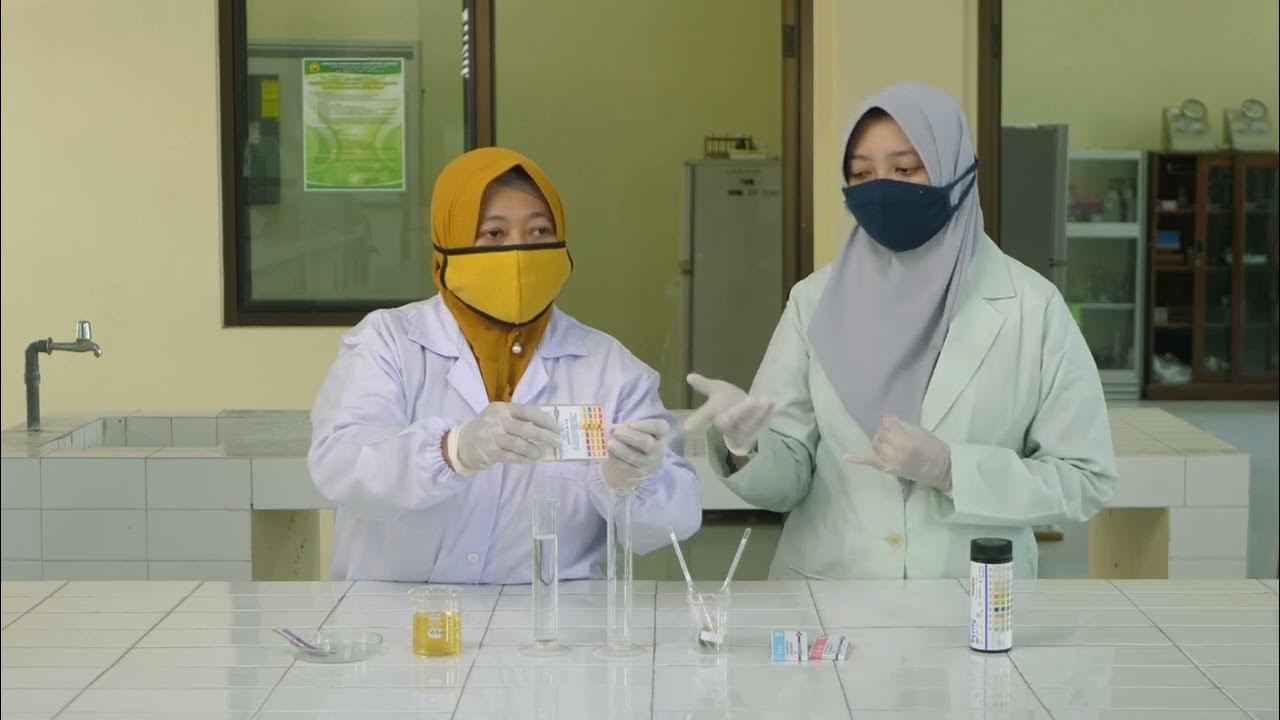Ensaio Gs
Summary
TLDRIn this video, Wilson, a laboratory technician at Foco, demonstrates the procedure to determine the specific gravity of soil grains (GS) using a pycnometer. He explains the necessary equipment, the process of preparing soil samples, and the steps involved in conducting the test, including measuring the soil's mass, soaking it, and dispersing it with a vacuum pump. The test is crucial for understanding the mineral composition of soil, which is vital for soil characterization. The procedure is standardized by ABNT NBR 6458 and involves precise calculations to ensure accurate results.
Takeaways
- 😀 The test for determining the specific gravity (GS) of soil grains uses a pycnometer and is performed on soil that passes through a 4.8mm sieve.
- 😀 The specific gravity of soil grains is influenced by the minerals that make up the soil, with values ranging from 2.59 to 5.2 grams per cubic centimeter depending on the mineral (e.g., feldspar to magnetite).
- 😀 Understanding the specific gravity of soil is important for characterizing soil properties and calculating physical indices.
- 😀 The test follows the Brazilian standard ABNT NBR 6458:2016, which specifies equipment and procedures.
- 😀 The necessary equipment for the test includes a pycnometer, funnel, distilled water, stopwatch, thermometer, balance, dispersion apparatus, and vacuum pump.
- 😀 The test must be repeated at least twice, with results that differ by no more than 0.02 grams per cubic centimeter for accuracy.
- 😀 For each test, approximately 250g of soil (prepared according to NBR 6457) is used, and finer soil may require around 50g of sample.
- 😀 Soil should be soaked in distilled water for at least 12 hours before the test to ensure proper dispersion.
- 😀 A dispersion apparatus is used for 15 minutes to separate soil particles, after which the sample is transferred to the pycnometer.
- 😀 After vacuum treatment, water is added to the pycnometer, and the weight is measured at specific temperatures, which is then used to calculate the specific gravity.
- 😀 The final result is the average of two consistent measurements, with the final value rounded to three significant digits.
Q & A
What is the main purpose of the test described in the video?
-The main purpose of the test is to determine the specific gravity of the soil grains, also known as GS. This helps characterize the soil based on its mineral composition and physical properties.
What equipment is required to perform the test for specific gravity of soil grains?
-The required equipment includes a picnometer, funnel, pipette with distilled water, thermometer, balance, dispersion apparatus, beaker, vacuum pump, oven, and capsules for determining soil moisture.
What is the significance of knowing the specific gravity of soil grains?
-Knowing the specific gravity of soil grains is important for understanding the mineral composition of the soil and its physical characteristics, which are crucial for soil classification and engineering applications.
Which standard governs the procedure for determining the specific gravity of soil grains in Brazil?
-The procedure is governed by the ABNT (Brazilian Association of Technical Standards) NBR 6458:2016 standard, which outlines the test procedure and equipment requirements.
How many times must the test for specific gravity of soil grains be repeated?
-The test must be repeated at least twice to ensure accurate results. The results are considered valid only if the two values do not differ by more than 0.02 grams per cubic centimeter.
What preparation is required for the soil sample before conducting the specific gravity test?
-The soil sample must be passed through a 4.8 mm sieve and prepared according to NBR 6457. For clayey soils, a smaller amount of soil (around 50 grams) should be used.
What is the role of the vacuum pump in the test?
-The vacuum pump is used to remove air bubbles from the soil sample after it has been mixed with distilled water. This step ensures that the test results are not affected by trapped air, which could alter the measurements.
How is the moisture content of the soil determined during the test?
-Moisture content is determined by placing the soil sample in an oven until its mass remains constant, then weighing the sample to calculate the moisture content.
Why is the specific gravity test performed at a temperature of 20°C?
-The picnometer is calibrated at 20°C, which ensures that the measurements are accurate and consistent. The temperature of the distilled water used is also recorded to adjust the calculations accordingly.
What should be done if the test results do not converge within the acceptable margin?
-If the test results do not converge within the margin of 0.02 grams per cubic centimeter, it indicates that there may have been an error in the procedure. The test should be repeated with proper care to avoid errors and ensure accurate results.
Outlines

This section is available to paid users only. Please upgrade to access this part.
Upgrade NowMindmap

This section is available to paid users only. Please upgrade to access this part.
Upgrade NowKeywords

This section is available to paid users only. Please upgrade to access this part.
Upgrade NowHighlights

This section is available to paid users only. Please upgrade to access this part.
Upgrade NowTranscripts

This section is available to paid users only. Please upgrade to access this part.
Upgrade NowBrowse More Related Video

Praktikum Perkerasan Jalan Raya - Modul 12 Pemeriksaan Berat Jenis dan Penyerapan Agregat Halus

16. Uji Berat Jenis Aspal Keras

LAB IN YOUR GRASP - KARAKTERISASI MATERIAL BETON : 11 BERAT JENIS & RESAPAN AGREGAT HALUS

Pengujian Hidrometer - Praktikum Survey dan Penyelidikan Geoteknik

PATOLOGI KLINIK - PEMERIKSAAN FISIK URIN

Pemeriksaan Berat Volume Tanah
5.0 / 5 (0 votes)